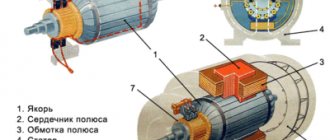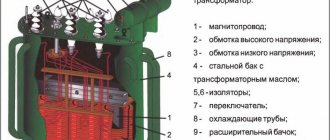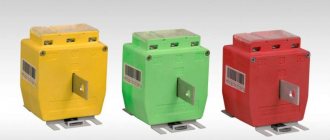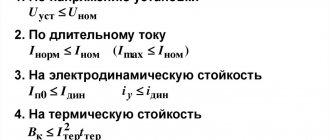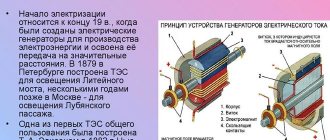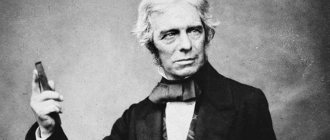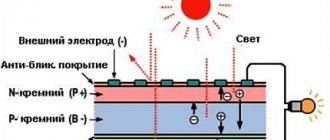Powerful electrical installations can operate with a voltage of several hundred kilovolts, while the current in them can reach more than ten kiloamperes. Naturally, it is not possible to use conventional instruments to measure quantities of this order. Even if they could be created, they would be quite bulky and expensive.
In addition, when directly connected to a high-voltage alternating current network, the risk of electric shock when servicing the devices increases. The use of measuring current transformers (hereinafter referred to as ICTs) made it possible to get rid of these problems, thanks to which it was possible to expand the capabilities of measuring devices and provide galvanic isolation.
Purpose and device of ITT
The functions of this type of transformer are to reduce the primary current to an acceptable level, which makes it possible to connect unified measuring devices (for example, ammeters or electronic electricity meters), protective systems, etc. In addition, the current transformer provides galvanic isolation between high and low voltage, thereby ensuring the safety of operating personnel. This brief description allows you to understand why these devices are needed. A simplified design of the ITT is presented below.
Design of measuring current transformer
Designations:
- Primary winding with a certain number of turns (W1).
- A closed core made from electrical steel.
- Secondary winding (W2 - number of turns).
As can be seen from the figure, coil 1 with terminals L1 and L2 is connected in series to the circuit where current I1 is measured. Devices that allow you to set the value of current I2, relay protection, automation system, etc. are connected to coil 2.
The main area of application of CT is metering electricity consumption and organizing protection systems for various electrical installations.
In a measuring current transformer, it is necessary to have insulation between the coils, the turns of wire in them and the magnetic core. In addition, according to PUE standards and safety requirements, it is necessary to ground the secondary circuits, which provides protection in the event of a short circuit between the coils.
You can get more detailed information about the principle of operation of CTs and their classification on our website.
Voltage transformers and their design
Voltage transformers are divided into:
- by number of phases: single- and three-phase;
- according to the number of secondary windings: a two-winding voltage transformer has one secondary winding, a three-winding voltage transformer has two: a main and an additional one;
- according to the purpose of the secondary windings: with the main secondary winding, with an additional winding, with a special compensation winding - to control the circuit insulation;
- according to the characteristics of the designs - for transformers of a protected type, waterproof type (protection from drops and moisture), sealed, with a built-in fuse and with an anti-resonance design;
- according to the principle of operation and design features: cascade, capacitive, grounded and not grounded.
In a cascade VT, the primary winding is divided into several alternately connected sections, the energy transfer from which to the secondary windings occurs through connecting and equalizing windings. A capacitive VT has a capacitive divider in its design. A grounded single-phase VT is a device in which one end of the primary winding must be grounded. A grounded three-phase VT must have the neutral of the primary winding grounded. All parts of the primary winding of a non-grounded VT are isolated from the ground.
List of main parameters
The technical characteristics of the current transformer are described by the following parameters:
- The rated voltage, as a rule, is indicated in kilovolts in the passport for the device. This value can be from 0.66 to 1150 kV. You can get complete information about the voltage scale in the reference literature.
- The rated current of the primary coil (I1) is also indicated in the passport. Depending on the design, this parameter can be in the range from 1.0 to 40000.0 A.
- The current on the secondary coil (I2), its value can be 1.0 A (for ITT with I1 no more than 4000.0 A) or 5.0 A. Devices with I2 equal to 2.0 A or 2.50 can be manufactured to order A.
- Transformation ratio (CT), it shows the ratio of the current between the primary and secondary coils, which can be represented as the formula: CT = I1/I2. The coefficient determined by this formula is usually called real. But for calculations, the nominal CT is also used, in this case the formula will look like: INOM1/INOM2, that is, in this case we operate not with actual, but with nominal values of the current on the first and second coils.
Below, as an example, is the datasheet of the TT-B model.
List of main parameters of the measuring current transformer TT-V
Purpose of transformers
Current transformers belong to the category of special auxiliary devices used in conjunction with various measuring devices and relays in alternating current circuits. The main function of such transformers is to convert any current value to values that are most convenient for measurements, providing power to disconnecting devices and relay windings. Due to the insulation of the devices, service personnel are reliably protected from high voltage electric shock.
Types of instrument transformer designs
Depending on the design, these devices are divided into the following types:
- Reel-to-reel, an example of such a TT is presented below.
Coil ITT
Designations:
- A – Secondary terminal block.
- B – Protective housing.
- C – Contacts of the primary winding.
- D – Winding (loop or figure eight).
- Rod-type , they are also called single-turn. Depending on the design they can be:
- Built-in, they are installed on the bushing insulators of power transformers, as shown in Figure 4.
Figure 4. Example of installing a built-in CT
Designations:
- A – built-in TT.
- B – insulator of the power input of the substation transformer.
- C – location of the CT installation (shown in section) on the insulator. That is, in this case, the high-voltage input plays the role of the primary winding.
- Tire, this is the most common design. Its structural principle is reminiscent of the previous type, the only difference being that in this design, a conductive busbar or core is used as the primary winding, which is inserted into the ICT window.
Busbar CTs manufactured by Schneider Electric
- Detachable. The peculiarity of this design is that the CT magnetic circuit can be divided into two parts, which are tightened together with special pins.
This design option greatly simplifies installation/dismantling.
Current transformer
Current transducers perform several special functions. They are connected to installations that measure the operation of equipment in different modes. The operating principle that characterizes the current transformer provides several basic functions of the equipment. These include the following:
- Converts variable current readings to 1 or 5 A values.
- In normal mode, the secondary current circuit is isolated from the high-voltage component of the primary winding.
- Reducing accidents. The installation prevents electric shock to service personnel and protects secondary circuits from overload.
In addition to the listed functions, DC instrument transformers include a rectifier. Secondary circuits are grounded in all transformers at one point. If the insulation is damaged, installing instrument transformers helps prevent overload of the secondary circuit.
terms of Use
Instrument transformers of direct current and alternating current are a high-voltage unit. The device functions normally only if the operating rules and labor protection requirements are met. The personnel becomes familiar with all established standards, in what mode the maintenance and testing of measuring equipment is carried out. Employees are allowed to work with the transformer only after full instructions.
Personnel must know under what conditions testing, inspection, verification and repair of instrument transformers are carried out. Otherwise, even if installed correctly, the operation of the technical installation may be disrupted by incorrect actions of employees.
The design principle prohibits opening the secondary winding in the transformer, which is energized. This action is accompanied by a violation of insulation. It will need to be replaced. The core is overheating. Normal operation is disrupted. In the process of constant overloads, it becomes impossible for the transformer to perform the actions assigned to it. In this case, the primary winding also does not work correctly. This is where the short circuit appears. This also leads to circuit replacement.
To switch during testing in a circuit with an electric current supplied, the secondary coil is first short-circuited.
Error
Metering rectifiers and current transformers require accuracy testing. During the testing process, similar equipment is attached to the unit. During installation, it is important that when checking equipment, an exemplary, serviceable current transformer is used. During measurements on its secondary circuit, the indicator is determined using an ammeter.
Equipment testing determines not only the error, but also a number of other indicators. During verification, the transformation coefficient is calculated, a technical examination of the quality of insulation of the circuits and the condition of the core is carried out. The question of whether the installation performs the functions assigned to it and whether the polarity of the windings corresponds to the characteristics specified by the manufacturer is investigated.
When conducting a technical examination of equipment compliance with regulatory requirements, secondary circuits are monitored. If deviations or defects are detected, components must be replaced. Depending on the purpose, the equipment must demonstrate the characteristics declared by the manufacturer.
Explanation of markings
The designation of domestic models is interpreted as follows:
- The first letter in the model name indicates the type of transformer, in our case it will be the letter “T”, indicating that it belongs to a TT.
- The second letter indicates a design feature, for example, the letter “Ш” indicates that this device is a bus device. If the letter “O” is indicated, then this is a reference CT.
- The third letter encrypts the isolation performance.
- The numbers indicate the voltage class (in kV).
- Letter to indicate climatic version according to GOST 15150 69
- CT, indicating the rated current of the primary and secondary windings.
Let us give an example of deciphering the markings of a current transformer.
Label on the TT indicating its brand
As you can see, the figure shows the marking TLSh 10UZ 5000/5A, this indicates that we have a current transformer (the first letter T) with cast insulation (L) and a busbar structure (Sh). This device can be used in a network with voltage up to 10 kV. As for the design, the letter “U” indicates that the device was created for use in a temperate climate zone. KT 1000/5 A, indicates the value of the rated current on the first and second windings.
Connection diagrams
The windings of three-phase CTs can be connected in delta or star (see Fig. 8). The first option is used in cases where it is necessary to obtain a higher current strength in the circuit of the second winding or it is necessary to phase shift the current in the secondary coil relative to the primary one. The second connection method is used if it is necessary to monitor the current strength in each phase.
Figure 8. Connection diagram of a three-winding CT with star and delta
If there is an isolated neutral, a circuit can be used to measure the current difference between the two phases (see A in Fig. 9) or a partial star connection (B).
Figure 9. Connection diagram of a CT for a difference of two phases (A) and a partial star (B)
When it is necessary to power the ground fault protection, a circuit is used that allows the currents of all phases to be summed (see A in Fig. 10). If a current relay is connected to the output of such a circuit, it will not respond to a short circuit between phases, but will definitely work if a ground fault occurs.
Fig. 10. Connections: A – for the sum of currents of all phases, B and C – serial and parallel connection of two-winding CTs
In conclusion, we give two more examples of connecting the secondary windings of a CT to take readings from one phase:
The secondary coils are connected in series (B in Fig. 10), making it possible to measure the total power.
The secondary windings are connected in parallel, which makes it possible to reduce the CT, since the current in these coils is summed, while in the line this indicator remains unchanged.
Choice
When choosing a current transformer, first of all, it is necessary to take into account the rated voltage of the device is not lower than in the network where it will be installed. For example, for a three-phase network with a voltage of 380 V, you can use a CT with a voltage class of 0.66 kV; accordingly, for installations over 1000 V, such devices cannot be installed.
In addition, INOM CT must be equal to or exceed the maximum current of the installation where the device will be operated.
Let us briefly outline other rules that allow you not to make a mistake when choosing a TT:
- The cross-section of the cable that will connect the CT to the secondary load circuit should not lead to losses in excess of the permissible norm (for example, for accuracy class 0.5, losses should not exceed 0.25%).
- For custody transfer metering systems, devices with a high accuracy class and a low error threshold must be used.
- It is allowed to install current transformers with an increased CT, provided that at maximum load the current will be up to 40% of the rated one.
You can view the norms and rules by which measuring current transformers (including high-voltage ones) are calculated in the PUE (clause 1.5.1.). An example of the calculation is shown in the picture below.
Example of current transformer calculation
As for choosing a manufacturer, we recommend using branded products whose advantages have been proven over time, for example ABB, Schneider Electric b, etc. In this case, you can be sure that the technical data indicated in the passport and the test methodology complied with the standards.
Types of designs
Instrument current transformers are available in various types. They all have the same purpose, but differ in their constituent elements and operating principle. Each variety is used to achieve certain goals, which allows you to choose the best option for each case.
Reel type
This type of instrument transformers is considered the simplest in design. It gained its popularity back in Soviet times, when there were no better and more efficient devices. The reel device consists of the following elements:
- protective housing;
- secondary and primary winding;
- terminal block;
- contacts;
- figure-of-eight or loop winding.
These include:
- low discharge voltage, which is a consequence of weak coil insulation;
- possibility of use only at low rated voltages (no more than 3 kV);
- ability to work only with reduced electrical strength requirements.
Pass-through transformer
These devices are considered the most commonly used. They are widely used in various switchgear designed for voltages from 6 to 35 kV. Their device is not particularly complicated.
The structure consists of the following parts:
- cast epoxy body;
- magnetic circuit;
- primary winding;
- secondary winding.
Transformers of this type are valued because they make it possible to save bushing in closed switchgears. Other advantages of the device include:
- small dimensions;
- high electrodynamic resistance.
Rod device
Rod transformers are often called single-turn transformers. Their main feature is that the accuracy increases with increasing current and decreases with decreasing current. It is due to the fact that the primary winding passes through the core hole only once, which leads to numerical equality in the number of ampere-turns and rated current.
The device consists of the following parts:
- iron magnetic circuit (core);
- bushing rod;
- secondary and primary winding.
Tire device
Bus transformers are products whose design includes cores with a secondary winding, but no primary winding. There is a special hole in the main insulation of the device through which the switchgear bus is passed, which acts as the primary winding.
This type of transformer is very similar to the rod type. Only at low voltage readings are several turns of the conductor laid through the hole in the core, which makes it possible to obtain a multi-turn design of the device.
The main advantages of a bus transformer are:
- simplicity of design;
- ease of installation, repair and maintenance work;
- the ability to use the device not only at low rated currents, but also at high ones (more than 2 thousand amperes);
- high electrodynamic resistance due to the stability of the bus structure.
Service
It is necessary to pay attention that if the mode and operating conditions are observed, the ratings are correctly selected and regular maintenance, the CT will serve for 30 years or more. To do this you need:
- Pay attention to various types of faults; note that most of them can be detected by visual inspection.
- Monitor the load in the primary circuits and prevent overload above the established norm.
- It is necessary to monitor the condition of the primary circuit contacts (if any) and there should be no external signs of damage.
- Equally important is monitoring the condition of the external insulation; in almost half of the cases, its resistance is impaired due to the accumulation of dirt or moisture, which short-circuits the contacts to the ground.
- For oil transformers, check the oil level, its cleanliness, presence of leaks, etc. Maintenance of such installations is practically not very different from other power plants, for example, NDE capacitive transformers; the difference lies in small technical details.
- CT verification must be carried out in accordance with current standards (GOST 8.217 2003).
- If a malfunction is detected, the device is replaced. The damaged CT is sent for repair, which is carried out by specialized services.


